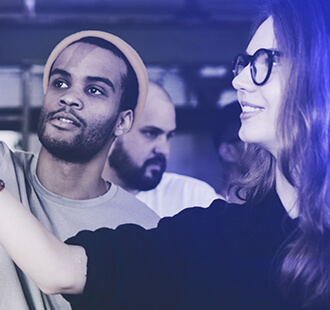
We are just a few months away from the beginning of 2022, and the changes in consumer behavior and expectations that changed during the global pandemic crisis have made something very clear to companies worldwide, and that is that these behaviors are here to stay.
This has pushed the CPG industry to be the ambassadors of change and the innovators of the industry, through strategies that integrate seamlessly the offline and online, and this is because nowadays we live in a hyper-connected world, where convenience is what drives consumers to seek unique and fast experiences aligned not only to their shopping purposes, but also to their personal ones. In the recent “State of the Connected Customer” study by Salesforce, it was found that 80% of consumers believe that their experience with a brand is just as important as the quality of services and products, and that this experience is key to increasing loyalty and therefore long-term profit. In addition, 88% felt that brands that listen to their needs are seen as better-quality brands.
To create this profit, and not fall behind, CPGs have opted for vital strategies to meet the expectations of their consumers. From buying DTC companies, to giving consumers the ability to create their own product according to their needs. We will highlight some of these strategies and trends that are redefining the future of the industry.
Bye bye middle man
We are seeing more and more 100% online brands and startups that are eliminating the different logistics channels and bridging the gap with their consumers by offering niche products, focused on sustainability, personalization and a premium experience. This has created a wake-up call for industry giants, and in order to not be left behind this momentum, they have started to buy many of these brands to create a new experience with their consumers. And this buying doesn’t just start from the pandemic, Unilever, for example, bought several, including Dollar Shave Club in 2016 and Schmidt’s Naturals in 2017.
Other brands such as Pepsi announced that they will create online stores for their consumers to buy their products directly, with 0 intermediaries, this with the objective of helping to develop skills and value through E-comm in the long term. Although it is a risky move, due to factors such as distance between the factory and the consumer, not doing so would imply a much greater risk as consumers are increasingly looking for a more personal treatment with their preferred brands.
The evolution of the value chain
It´s time to let go the traditional. Technology has come to impact the entire value chain, by creating more automated and disruptive processes to reach the consumer in a more unique and faster ways. In marketing, for example, advanced analytics are to generate promotions, product assortment and even pricing. Today, marketing teams from different CPGs work together with Data Scientists, integrating, consolidating and generating insights that positively affect marketing strategies and budget allocations. In sales, machine learning algorithms help create a more specific sales plan with key actions to ensure optimal negotiations and in the supply chain, experts are seeing how to convert business objectives and supplies into digital projects focused on more convenient and fast solutions.
Extreme personalization.
As we mentioned earlier, consumers are looking for experiences, and brands have to move to create them. According to a McKinsey study, almost 26% of purchases are based on product recommendations and reviews. For CPGs this percentage rises, with 65% in cosmetics and 55% in soaps. Using social networks, not only for the simple fact of being present, but also to listen to insights and understand them, can become a key point to create a better positioning through relevant promotions, allocation of targets, and even innovation and development of products.
Another way to personalize is by creating interest through exclusivity across different E-Commerce platforms. Walmart, for example, offers L’Oreal hydration kits exclusively on walmart.com. Another German company even allows its online users to create their favorite type of muesli using more than 80 ingredients, and it is delivered to its consumers instantly.
But let’s not just stick to E-Comm. Augmented Reality (AR) is an incredible opportunity for CPGs to make experiences from the package. With the help of Smartphones, people can discover more about what they are buying, immerse themselves in the production experience and even find out which product is right for their needs, thus connecting the digital world to the offline world, and optimizing the collection of customer data in a more organic and optimal way.
We have to start acting and fast. Today is the time where we have to understand that markets and industries are moving at the speed of light and we have to captivate consumers right away. At 121 Corp, we move at the same speed as the world. We work hand in hand with our clients, and together we create innovative strategies and product design in record time across their value chain and consumer touchpoints. We know that in this year and the new years to come, we will not only need to have the perfect product with the same promotions and campaigns as always, but we will have to put ourselves in the consumers’ shoes. Understanding their tastes, needs, values and purposes, in order to create experiences that excite them and make them fall in love with a brand.



